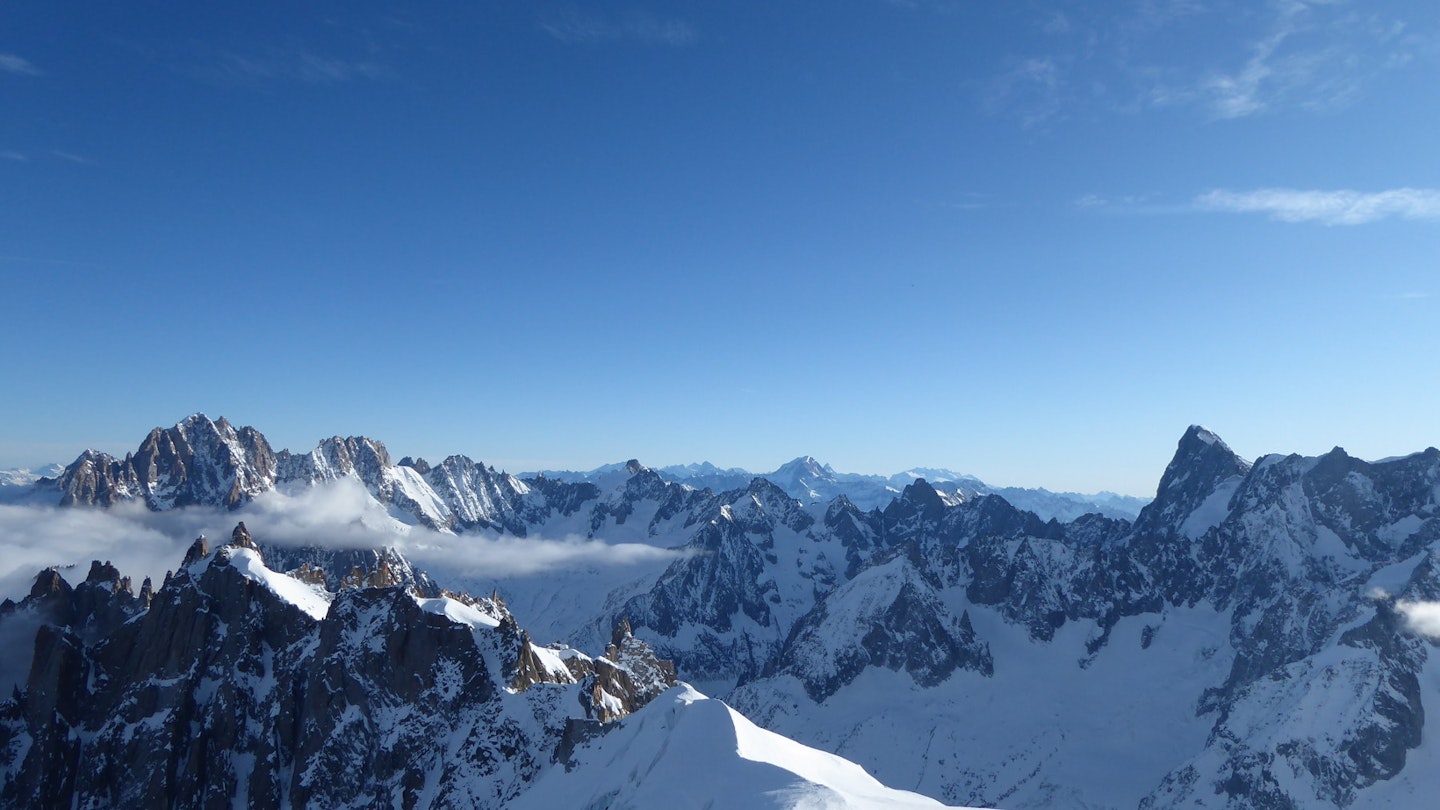Chamonix Valley in the French Alps has long been one of Europe’s premiere winter holiday spots. However, as climate change takes its toll, the destination ponders its future.
“We’ll be lucky to find the snow,” my guide says as she straps the transmitter across my chest.
This is meant to be reassuring; the device is required by French law in case we are buried under an avalanche while venturing into the backcountry. Although this fact can be startling for a snow holiday newbie like myself, it serves as just another reminder that, in the middle of the coldest month of the year in the heart of the French Alps, it hasn’t properly snowed in a month.

Sanne Davidsen has been a guide with the prestigious Compagnie des Guides de Chamonix for ten years. As she adeptly navigates the winding roads to the starting point for a snowshoe hike in the Carlaveyron Nature Reserve above Les Houches, she admits that these ‘unusual Januarys’ have become more and more common.
“We had two Christmases with hardly enough snow for them to open up there. Fortunately, this year we were lucky to have a significant amount of snow before Christmas. While the snow is good at higher altitudes, it’s a bit sparse at the lower levels. It’s somewhat unusual,” she observes.
A few minutes trekking up the hill brings us to the snow, which is either hard and compacted—or more like ice—or granular; not the fluffy powder snow that skiers desire the most. By 11 am, the sun is beginning to reach us from over the mountain range, creating diamond-like reflections on the snow through a gateway of alpine evergreens. The idyllic scene prompts us to remove gloves and hats and open our jackets. While we bask in the warmth amid a picturesque landscape, I’m reminded once again that this should not be a normal January morning.

“We often remark that this feels like springtime weather,” Sanne observes. “The sunny conditions, especially if you find a spot out of the wind, make it feel like spring in the afternoon. January is typically cold—with expected temperatures ranging from -10 to -15 degrees Celsius in the morning—but we’re experiencing more like -5 degrees.”
Despite the reassuring lack of avalanches, the climate emergency is making the landscape more unpredictable and unsafe in various ways, including increased rock landslides due to the melting of permafrost at high altitudes. In August 2019, local officials initiated a €32 million investment for the High Mountain Climate Plan to ensure safer access to huts, enhanced monitoring tools, more training for mountain rescue operations, and a new center near the Mer de Glace to help educate visitors about climate change and its impacts on glaciers. While this plan is commendable, the valley faces challenges just like the rest of the planet, with impacts more evident here than in many other areas.
Approximately 4 million people visit the Chamonix Valley annually, joining over 13,000 permanent residents, many drawn from around the globe by the breathtaking scenery, love of the mountains, and economic opportunities within the thriving tourism industry. Consequently, this trend is unlikely to shift in the coming years, especially since 90% of skiing occurs above 2,000 meters, making it a comparatively snow-sure destination.

“In the Chamonix valley, the effects of climate change are noticeable, but they are also observed at various resorts in the Alps,” states Muriel Ambrosino from MGM Hôtels & Résidences, a luxury accommodation developer with multiple Alpine properties. “While we have sufficient snow everywhere to ski and enjoy our time on the slopes, it was certainly different two decades ago when snow depth was often five or six meters— even down in the valley.”
She notes that there is an increasing interest in residences during the summer months, as more people seek to escape the sweltering heat of lower altitudes. For the time being, visitors seem to be evenly divided between summer and winter seasons according to local tourist figures, with a diverse array of events like trail running marathons and jazz festivals attracting visitors in the warmer months. However, it is essential to note that France experienced two significant heatwaves in 2019, with southern temperatures soaring to 46°C. Consequently, Chamonix’s local tourist industry could benefit in the coming years.
“It will change, but we cannot predict whether or not there will be snow in five or ten years,” Muriel says. “It’s possible that the intensity of weather patterns and temperatures will return to normal. At this moment, we cannot know for sure. However, clients remain optimistic about the future and are eager to continue visiting for their holidays and investment.”

After two days in the valley, we depart for the airport as the clouds roll in—a sight that excites the locals, who find relief in seeing more ‘normal’ January weather. On the motorway, we pass a stream of cars all heading toward Chamonix, many undoubtedly eager to hit the slopes the next morning for some precious time with the fresh powder snow of the postcards—a privilege that is fast disappearing.
AnneMarie travelled to Chamonix with support from MGM Hôtels & Résidences. GoTravelDaily contributors do not accept freebies in exchange for positive coverage.





